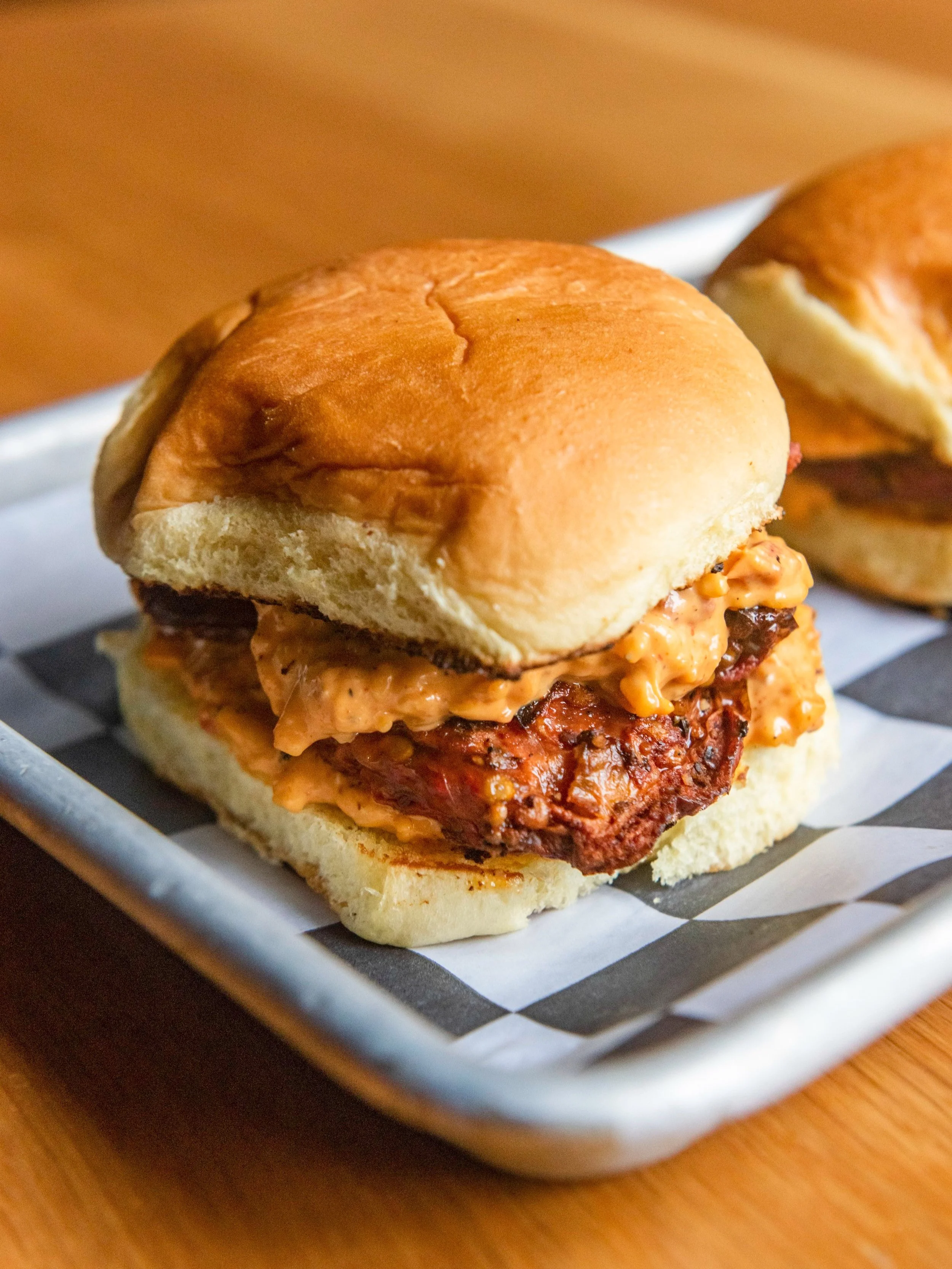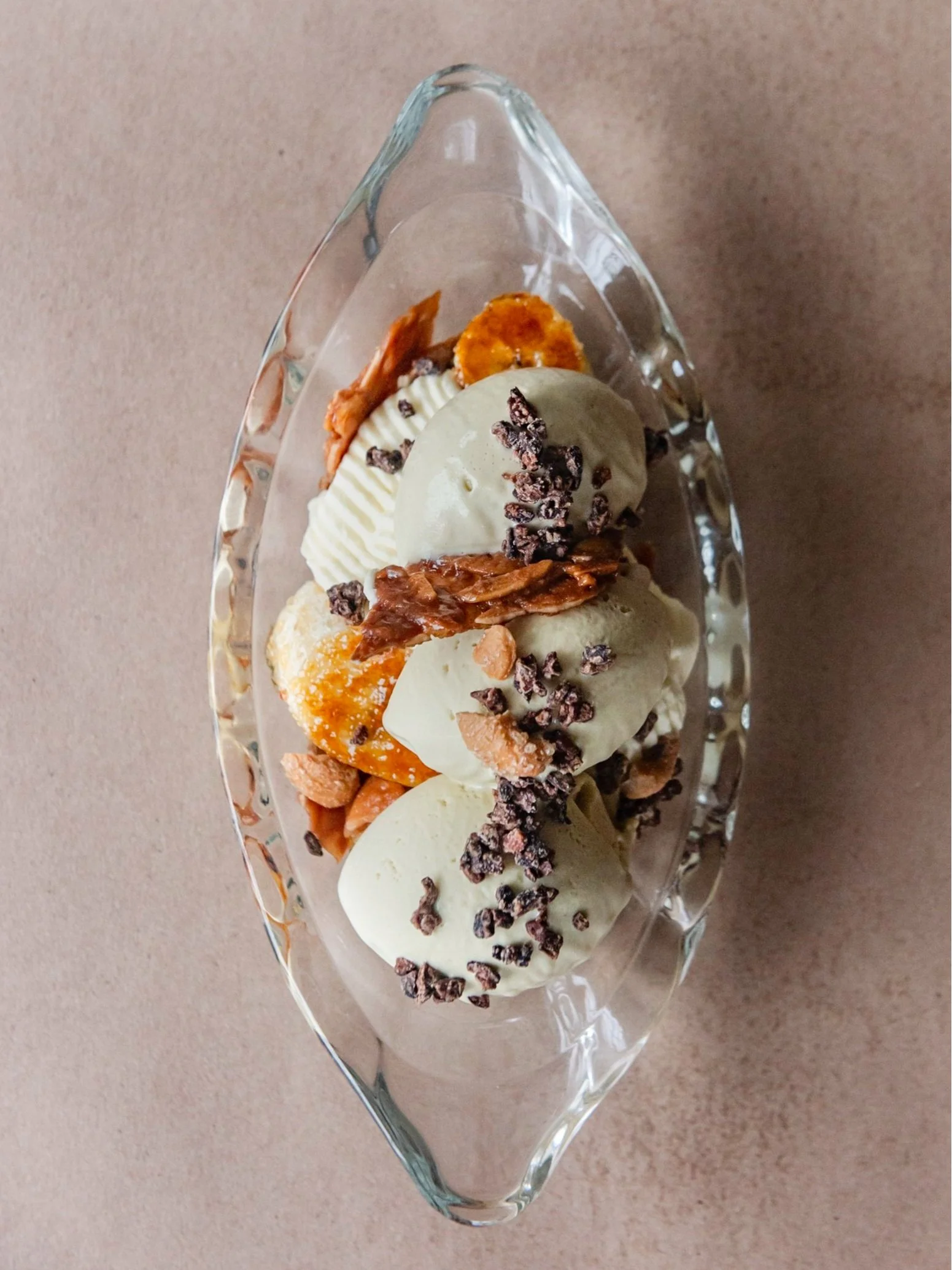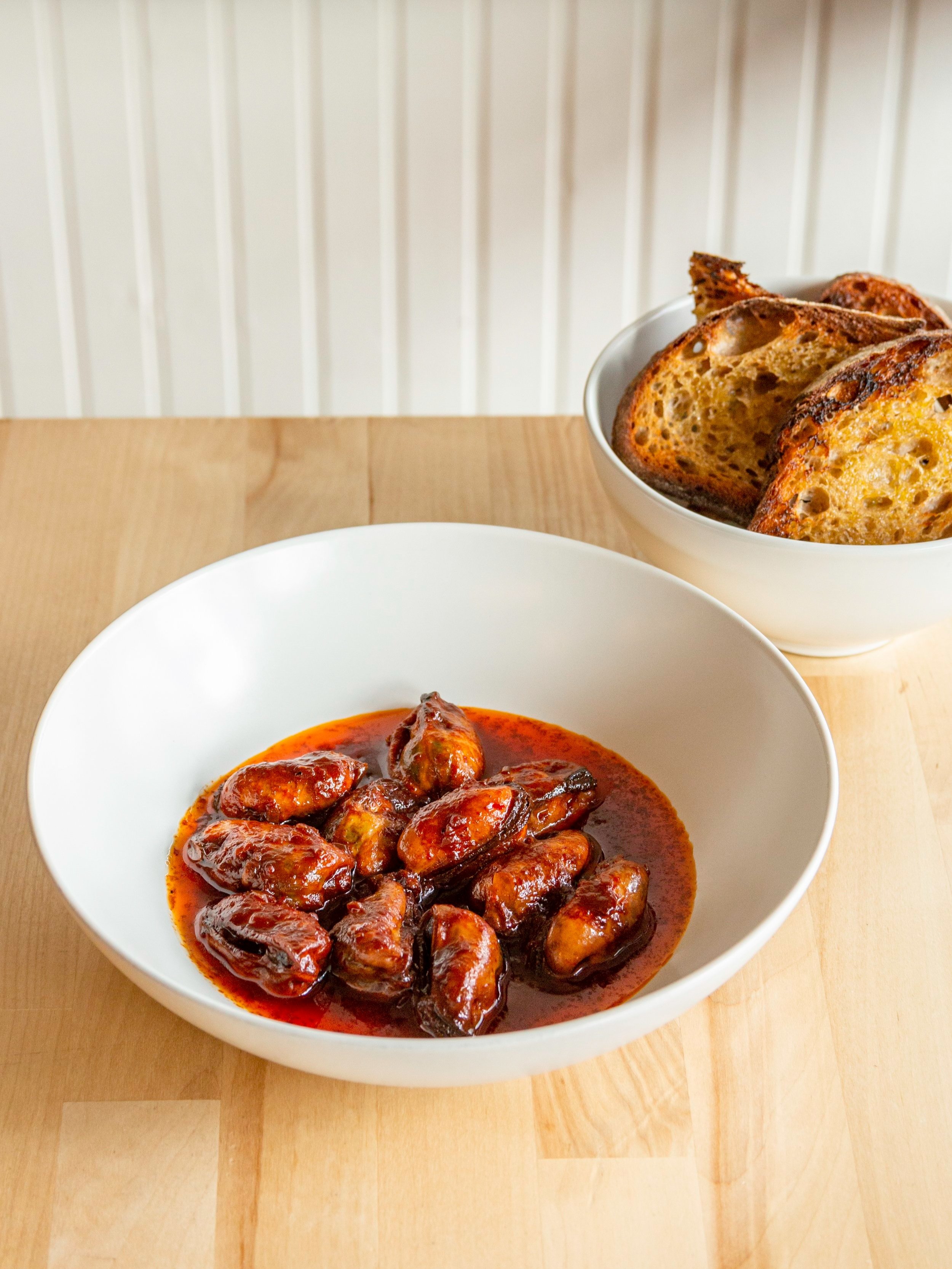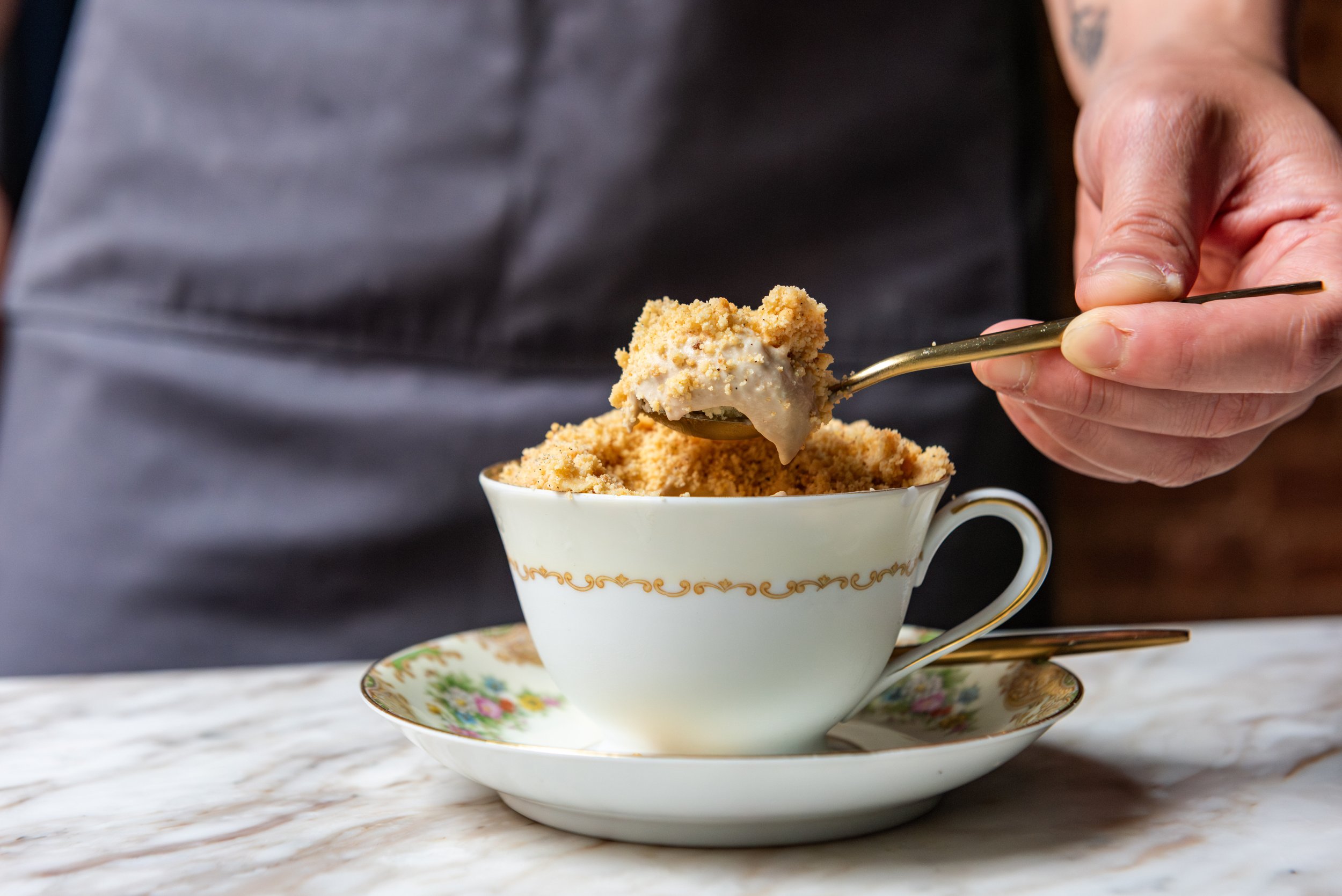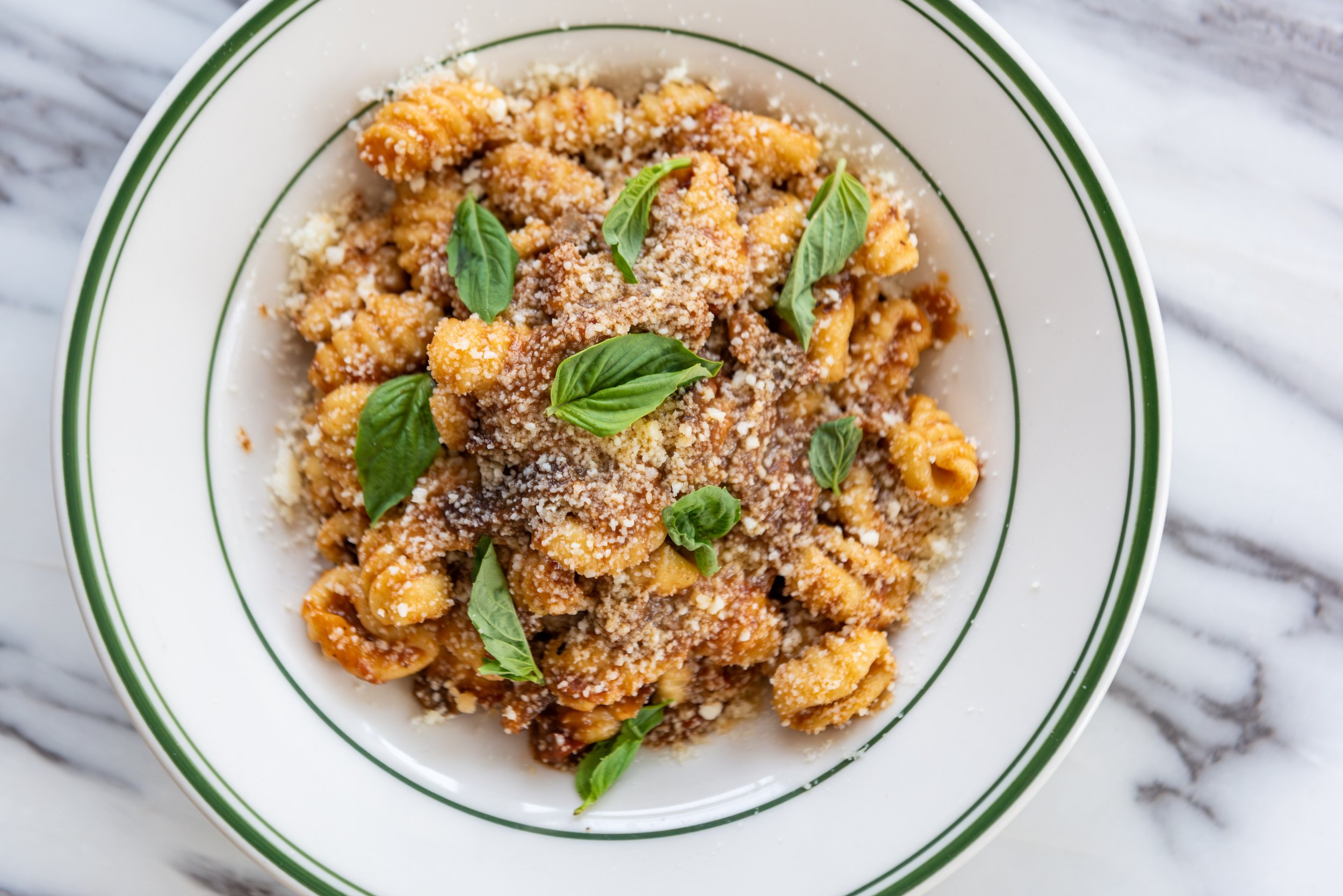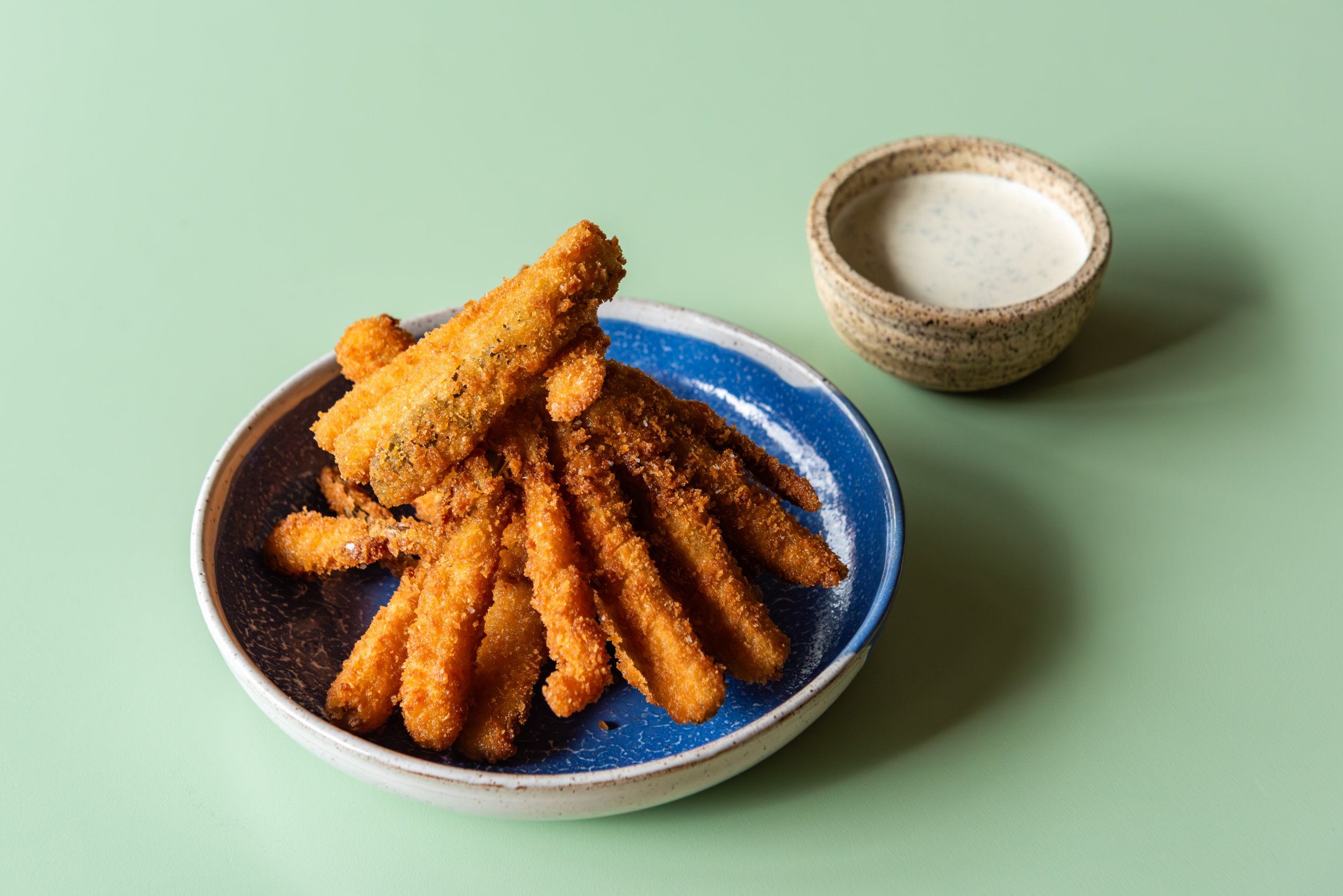2023 Coastal New England Kitchen Notebook
An in-depth look at some of our favorite dishes and drinks from our time on the ground in Coastal New England
fashion forward
Growing up in Moldova, buckwheat was a major staple in Bartender Cristian Cantaragiu’s diet. Whether it was with hot milk for breakfast, or simply boiled on the side with dinner, buckwheat was ubiquitous. And when he was developing the opening menu for Clementine Cocktail Bar, he leaned into the flavors of his childhood. “I originally wanted to make a baked apple and walnut Old Fashioned, but I couldn't get the recipe right,” he says. “So I started playing with buckwheat.” Cantaragiu used an infusion technique that he learned from his time working in London: toasting dried buckwheat in a pan until browned and popping, but not burnt. He then douses it with equal parts room temperature rye and bourbon. “When you toast the buckwheat and immediately cool it, it opens up new flavors of coffee and chocolate,” says Cantaragiu. He doubles down on the rich notes with a stout syrup and a blend of black walnut, chocolate, Angostura, and orange bitters for “a nice, complex, dark aromatic character.” Garnished with a cherry and a square of dark chocolate, Cantaragiu’s Fashion Forward intensifies the deep, nostalgic flavors of the toasted buckwheat: “The whole concept of the drink was to represent something from where I come from.”
Pho’tine
When Chefs Korn Suom and Josh Burgoyne were workshopping specials for their late winter menu at Ming’s Asian Street Food, Suom couldn't help but remember family trips to Montreal as a child; she’d hide from the cold and sit down to a meal of steaming hot pho with a side of French Fries. “I wanted something that reminded me of warmth in the wintertime. Pho and fries are two of my favorite things,” Suom says, so she combined them into ‘Pho’tine:’ a beautiful pile of crunchy fries and gooey cheese curds smothered in a pho gravy. To make the dream dish of her childhood, Suom starts with the gravy. Using a beef concentrate paste, she creates a roux, then seasons the base with Worcestershire sauce for depth, apple cider vinegar for “a little zing,”and five spice. Next comes the fries. While experimenting in the kitchen one day, she tossed potatoes in their chicken dredge—a combination of garlic powder, onion powder, salt, gochugaru, pepper, and flour—before double frying them. The result: extra crispy fries that stayed fresh for hours. “We typically don’t coat fries in anything, but it turned out to be the super magic secret.” Suom tops the Pho’tine with cheese curds, sliced red onions, jalapeños, crispy fried garlic, and a lime wedge. “It's like I’m eight-year-old Korn enjoying a bowl of pho with a side of fries again.”
Spring Pechuga
“Pechuga is for special occasions, and that’s what this restaurant has always been about for me,” says Bartender Alyssa Venuti of Nicks on Broadway. “It encapsulates everything I love about Oaxaca—celebrating family and community.” Inspired by the botanical-and-protein-infused agave distillate, Venuti wanted to create a version that utilized local, seasonal ingredients. Rather than take her “pechuga” through distillation, she opted for a fresh infusion and fat wash for an aromatic sip with added texture. The restaurant's whole animal philosophy means there are often leftover bones, so Venuti utilizes Blackbird Farms beef bones for the fat wash, roasted until the fat and marrow begin to render, then placed in a glass jar where they bathe in Pelotón de la Muerte mezcal. For the botanicals, Venuti lets the seasons guide her. For spring, she chose Thai basil, celery blossom, coriander, sumac, lavender, lemongrass, hibiscus, and lemon balm. Venuti toasts the botanicals along with citrus peels to invigorate and meld the flavors before loading them into sachets and hanging them over the mezcal and bones. The vapors move through the sachets over the course of two weeks, and the result is a softly scented sip with a silky, unctuous body, which Venuti recommends serving neat. “It’s like early spring morning dew on the nose, light and floral. The viscosity adds meatiness and a round texture.”
Smoked Tomato Sliders
For Chef Ed Davis, there’s so much nostalgia behind a tomato, mayo, and cheddar sandwich like the ones his mom used to make growing up. “Every time I smell a tomato in that two or three seconds after you hit it with salt, the smell pops and I immediately think of my mom,” he says. So last summer at Durk’s BBQ, when he was developing a smoked tomato sauce for a green bean dish, he snuck a plum tomato off the rack: “it looked super plump and juicy, and it was incredible with just salt and pepper.” After some R&D, Davis landed on a thick layer of his rib rub to season the best paste tomatoes he could find before smoking them for two to four hours. He cools, peels, and sears the tomatoes, then serves them on a slider roll with pimento cheese for an umami-forward, subtly sweet homage to his childhood snack (recipe on pg. 86). But for some reason, they simply won’t sell. “It’s a bit of a heartache when things don’t sell. We do these sliders a lot for catering, and everyone goes crazy for them, but people don’t come in and order them,” he says. “We’re all just really confused because they’re so good. I’ll never accept defeat. It’s a labor of love. We’ll do 300 covers, and sell four of these—that makes my fucking day.”
Cranberry Beans
In-season product is the driving force behind the menu at Helm Oyster Bar & Bistro, so when Chef Billy Hager heard one of his farmers had a surplus of produce, he soon found himself with 25 pounds of carrots. Eager to use all the product, he wanted to make something that was shelf stable and could be enjoyed in the coming seasons. “We decided to make a miso out of [the carrots]—it came out fantastic.” After roasting the carrots until tender, Hager combines them with koji and lots of salt before fermenting them for a month, opting for a younger, fresher miso. To pair with the miso, Hager braises locally sourced cranberry beans with mirepoix, garlic, thyme, and bay leaf for some earthiness. On pickup, the miso and beans are cooked down together in olive oil for a luscious, savory-sweet sauce. Hager finishes the dish with a bright, fresh herb salad: “The herbs really make it. We add arugula flowers to balance out the earthy sweetness of the beans,and more peppery herbs—parsley, chervil, and chives—to help cut through.” By highlighting ingredients that are fresh at the time, the formula for Hager’s dish can be adapted for any season. “It’s understated. It’s a bowl of beans, but it’s a really good bowl of beans.
Bananas Foster Split
Growing up on the Jersey Shore, summers meant one thing for Pastry Chef Michelle Padovano: ice cream. And not just any ice cream would do. “My favorite flavor has always been banana.” So when she was rummaging around the attic at Nantucket’s Straight Wharf and found a vintage crystal banana split boat, she wanted to create a dessert to make it shine. She started with two well-known banana desserts: Banana Split and Bananas Foster. But how could she balance something that’s typically so sweet? Padovano leaned into the classic nutty and chocolate flavors by way of a tahini-banana ice cream, candied cashews, sesame brittle, and candied cocoa nibs over traditional hot fudge. “I want that bitter cacao taste to play off the sweetness of the banana,” says Padovano. She introduces acid to the dish by mixing a passion fruit crémeux into her whipped cream. “With all my dishes, I like to make sure there’s acid so it’s balanced,” she says. “I think banana and passion fruit are such a good combo. That’s my favorite part of the whole dish.” Built on the foundation of a brûléed banana, the Tahini Bananas Foster Split leans on nostalgia for a nut-forward, refined take on the dessert that is perfect to cool you off on a hot summer night.
Bangs Island Mussels
Tinned fish graces menus from coast to coast; a beloved pantry item that’s ready-to-eat and packed with flavor. But when it comes time for service, serving tinned fish can be laborious and inefficient. In the case of Judy Gibson’s Chef Chris Wilcox, when your Bangs Island mussels fly off the pass, you need to cut to the chase and find a way to that concentrated, sea-fresh flavor without the fuss. “We call it escabeche on the menu, but that's taking a liberty. It's essentially our take on tinned fish.” (recipe on pg. 86) Wilcox first cold smokes the mussels, then drops them into a rich marinade where they live until they’re picked up for service. The marinade is thick with tomato and chile pastes, with added umami from roasted shallot oil, soy sauce, Sherry vinegar, and a healthy dose of fish sauce. “We do the mussels in 30-pound batches about every week, and in the summer we do larger batches when business picks up.“ When it’s time to serve, all Wilcox has to do is warm the mussels, hit them with some fresh lemon, and serve them alongside toasted Night Moves sourdough. “I took them off the menu once and people went crazy. They have such a unique flavor—it doesn’t taste like other tinned fish.”




